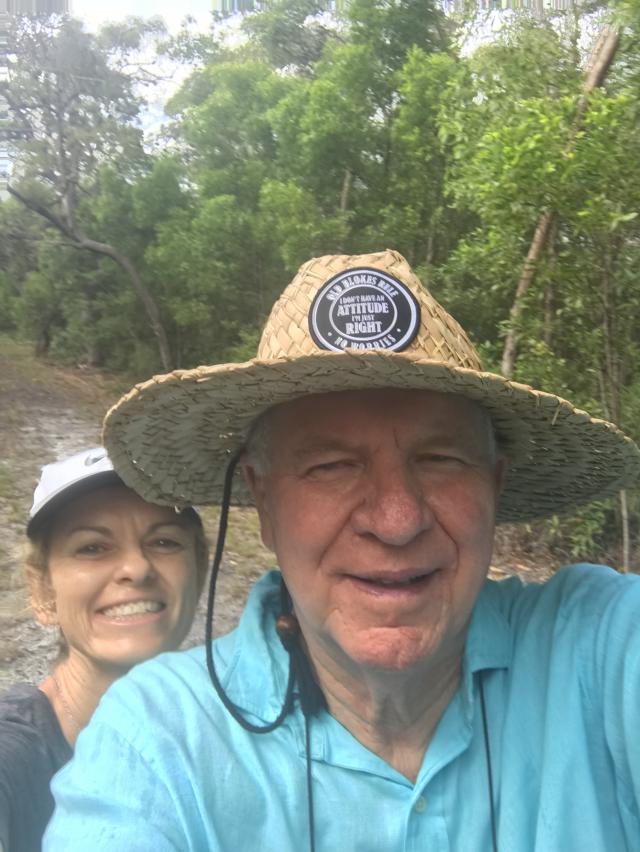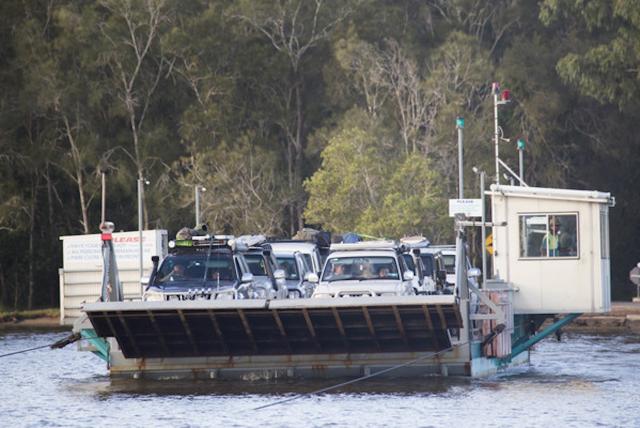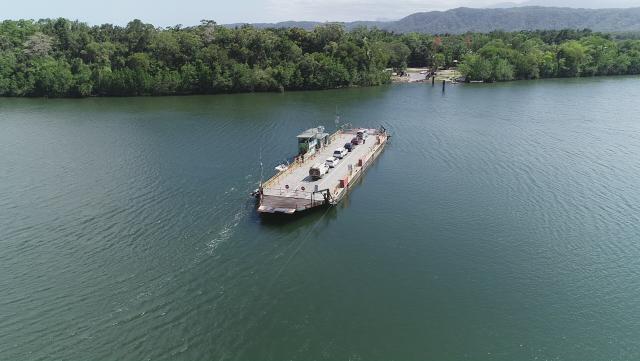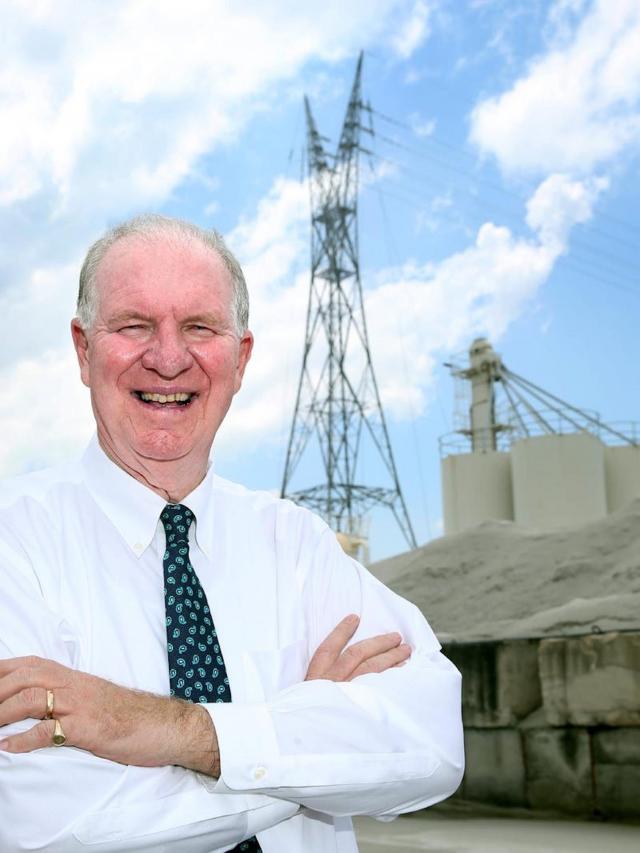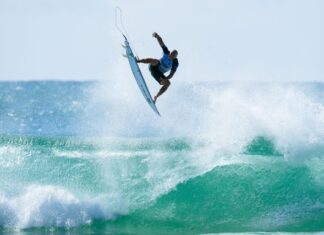When it comes to analysing the problems facing the Noosa North Shore and Cooloola, few people have the depth of experience or more passion for the area’s wildlife than Teewah landowner Hume Campbell.
Brisbane-based Mr Campbell, who has chaired his 95-year-old family company Riverside Marine Industries for the past 25 years, has owned and operated barges and ferries all over Australia and in other parts of the world, owned property on Fraser Island and at Teewah, developed marine tourism operations in Far North Queensland and been both a sand miner and a conservationist.
These days, he and wife Rowan spend as much time as possible at the Teewah beach house they have had for nearly 25 years, but like many residents, they are fearful for its future.
“When the speed limit was 100 on the beach we nearly sold up and left,” he told Noosa Today this week.
“It was hell on earth, cars running into things, driving up dunes. Then we had the police coming up telling people to get off the beach because it was a gazetted road.
“I’m not a preservationist but I’m a conservationist, and I think there’s a big difference. You take a thing like the little shells we have dotted along the beach. An academic did a study and found there were extraordinary numbers of species of shells represented, but the 4WDs just tear along the tideline and destroy them. I think Parks and Wildlife need to do far more education and interpretive work. [My ideas] might seem like a purist approach but what we’re doing now is untenable and it’s going to get worse. We either have to look after it or we just give up on it.”
And Hume Campbell is not short of ideas on this subject, ranging from Noosa Council’s failure to provide basic services to Teewah Village to a fleet of 4WD buses replacing cars on the beach to a new sustainable model for the Noosa River ferry service over a long and fascinating conversation. We’ll dissect those ideas in a moment, but first a little background on Hume and the Riverside Marine group.
The Campbell family arrived in Brisbane from Scotland in 1861, just two years after Queensland’s separation from NSW, and over the ensuing decades the nine children of patriarch Peter Morrison Campbell became involved in the commercial development of Brisbane.
In 1926 grandsons Norman and Colin founded Riverside Coal Transport. By the time fifth generation Hume took the reins of the Riverside group in 1997, it had expanded to include an empire of associated industries, headquartered on the Brisbane River at Newstead but with operations around Australia and beyond.
Under Hume’s leadership in 2006 the Campbell family embarked on a multi-million-dollar expansion into the northern Queensland marine tourism industry, acquiring the Whitsunday-based Fantasea Cruises, which led to a $100,000 pledge from the Fantasea Foundation towards research into the challenges facing the survival of our coral reefs. Today, with more than 400 employees, operations around the globe and multi-million dollar revenue, Riverside Marine Industries continues to support Queensland environmental causes.
Oddly enough though, it was Hume’s experience in Fraser Island sand mining operations while working his way up in the company that helped formulate his passion for the unique environment of the Great Sandy Region.
It also gave him his first taste of the highly competitive nature of the barge and ferry business.
He recalls: “A man called Gordon Elmer had the [Inskip Point] barge in those days, and he and his family were nice people. We had a barge there that we were running for Mineral Sands, so when sand mining was closed down we had this landing barge in place and we competed with Gordon for a while, but he ended up chartering it from us. What became known as the barge wars happened after that, after we’d walked away.”
The conflict between rival private operators became deeply personal and resulted in one dollar and even free crossings almost sending both to the wall, but the K’Gari residents supported their local bloke.
Says Hume: “It did get very personal, but I think I’d rather see two companies battle it out than just have the government come in and lay down the law.”
Which is a neat segue into the here and now on Noosa’s North Shore, in which Hume has many ideas about the future of the ferry operation, foremost of which is that it should be privately owned.
“We used to run a cross-river ferry for the Brisbane City Council, but I think there’s a lot to be said for private ownership. I’ve also been involved in operating ferries for Sydney Ferries, working on a committee with government, in which a very recent report details more than 40 defects in those ferries. That’s largely because the bureaucracy was involved.”
Hume favours the introduction of higher technology across the board and electric ferries powered sustainably through hybrid sources, possibly using solar panels built above the decks, with the costs subsidised by at least doubling the current visitor fare.
Asked to nominate a ferry service that might be a model for Noosa, Hume suggests the Daintree River ferry with the proviso “although there is council involvement there too”.
In fact, consultants for Noosa Council looked at the Daintree operation when assessing the previous lease renewal in 2019 and found several of its assets, such as priority slipways for residents, not applicable here, and since then owner Douglas Shire Council has stalled on the introduction of a new hybrid solar ferry with increased capacity while it examines options, such as a bridge.
But there is still plenty to be learnt from the higher tech operation at Daintree.
As a Teewah resident for as much of the year as his business will allow, many of Hume’s concerns for the area are about a lack of services and perpetual confusion about shared responsibilities.
“I don’t think the locals want a lot of government involvement in their affairs, but I think if you’re going to take rates and land tax there should be basic services. Rubbish should be collected at least once a week. Now there are about 20 bins for 100 residences in a remote and sinister place where I won’t let my wife or daughters go.
“It’s hard to believe that Noosa Council can’t deliver these basic services. I’m in the corporate sector and we’d never be allowed to behave like that. We’d lose our operating licenses immediately,” he said.
“There is a lot of confusion over who is accountable for things that happen on the North Shore and Cooloola, one of the most magnificent parts of our country.
“There’s a rubbish collection point just a bit north of Teewah and I went up there the other day to see how it was being handled. If I was in the government I’d be broken-hearted. There were parts of air-con units, bits of tents thrown in the dunes. You look at that and think, they just don’t deserve this place. If this was a park in America you’d never see this kind of thing. It would be highly managed by real rangers with real machinery, getting things done. Here they drive straight past lantana and don’t even see it.
“Then there is the sewage dumping station at the third cutting. They put a road in for it and mowed down the most magnificent melaleuca forest. There was no signage, no warning, it just happened and no one knew it was coming. There’s plenty of land up near the pub that no one knows what to do with, so it could have gone in there. I couldn’t believe the vandalism of cutting those trees down.”
But it all comes back to the beach that has been allowed to become a highway.
Says Hume: “Well, there’s a bitumen road that gives you access to Rainbow Beach, so you don’t have to use the beach to get there. I would argue that this should not be the function of the beach, it should be a recreational facility, but as a compromise you might allow people to drive north to south only, going one way by road and the other by beach, and leaving the beach just north of Teewah and coming down the track, so that the beach from Teewah to the river mouth could return to being home for migratory birds.
“There would be all kinds of arguments against this, but I say let’s talk about one of the most beautiful beaches and points in the world and how to keep them that way.
“There was an Italian gentleman living in Teewah who has since passed on, but he asked me if I would drive him up to Double Island Point for one last look. We were sitting on the sand appreciating the beauty, and he said to me, ‘Australians don’t appreciate what they have’.
“Those words came back to me just a couple of weeks ago when I went up there and saw 500 cars turning the beach into a car park. You can’t deny people the right to experience the place, but I’d rather see a small fleet of 4WD buses do the job.”

